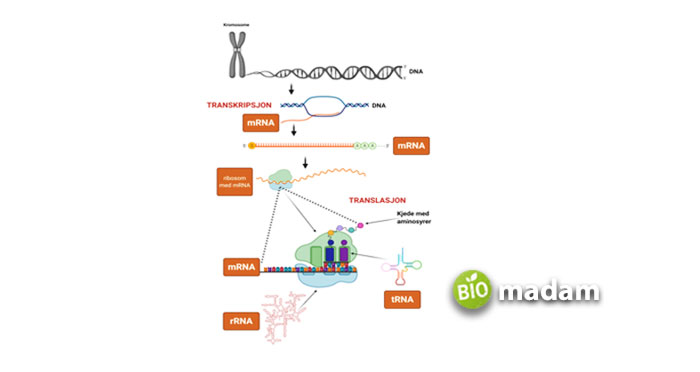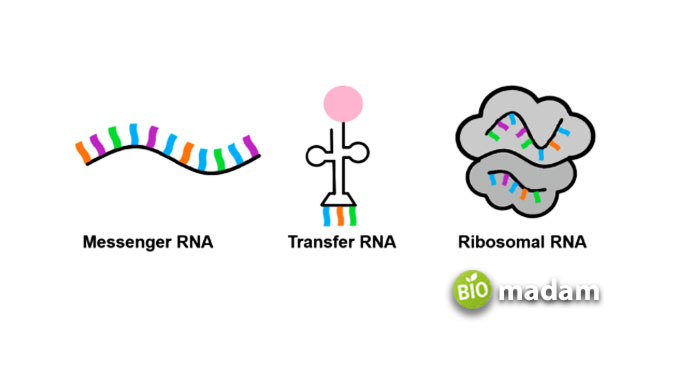Nucleic acids are important molecules in the human body contributing to various critical functions besides fats, proteins, and carbohydrates. They make up two of the most critical compounds for growth and reproduction. They contribute to the synthesis of proteins in the body that are the building units of the structure of an organism. Moreover, they ensure the passing down of characteristics from one generation to another during reproduction. Keep reading to learn the functions of nucleic acids in living organisms.
What are Nucleic Acids?
Nucleic acids are naturally occurring large biomolecules that play an important role in carrying information in the cell. They have a helical structure that contains information regarding the production of proteins and gene replication and transcription.
Nucleic acids comprise biopolymers that produce nucleotides, acting as the building blocks of nucleic acids. The basic structure of a nucleotide consists of the following parts:
- Nitrogen base (purine/pyrimidine)
- 5-carbon sugar (ribose/deoxyribose)
- Phosphate group

The hydroxyl groups in ribose are attached to the second and third carbon. Meanwhile, deoxyribose has a hydrogen group attached to the second carbon and a hydroxyl group with the third. The nitrogen molecules contribute to the production of new compounds by giving molecules to form a ring structure. All three structures within nucleic acid molecules are held together by ester and glycosidic bonds. They hold the components of the nucleotides as well as multiple nucleotides that form long chains of nucleic acids.
Types of Nucleic Acids
Nucleic acids in living organisms are of two types:
- DNA (deoxyribonucleic acid)
- RNA (ribonucleic acid)
Nucleus plays an essential role by keeping the DNA of eukaryotic cells in it, responsible for countless functions. While, on the contrary, RNA is dispersed in the cytoplasm. As the name indicates, DNA contains a deoxyribose sugar with a hydrogen atom on the second carbon. Alternatively, RNA has hydroxyl groups on both second and third carbon. DNA molecules have a double-helical structure with complementary bases present opposite each other. RNA, on the other hand, has a long chain-like structure with a nucleotide at each link.
The changes in their structure correspond to the specific functions of these nucleic acids in the body.
Functions of DNA in the Body
The primary function of the DNA and genes in the body is to store and protect hereditary information that needs to be passed to the next generation. This information is also critical to processes within the body of the organism.

Genetic Information Storage
DNA in the body forms genes and alleles essential for transferring information from the parents to the daughter cells. Thus, DNA is the basic site for storing genetic information within the cells. The bases in the nucleotides follow the base pairing rules that allow the copying of data from one strand of the nucleic acid to produce another. It comprises all the information about the genotype and phenotype of an organism.
Protein Synthesis Information
While DNA does not directly contribute to the formation of proteins, it carries information regarding the type of proteins to be synthesized. This relates to the fact that the information carried by the genetic material accounts for all the activities within the cell.
Forensic Uses
DNA has proved to be of immense importance to forensics in finding our criminals by obtaining DNA from skin, nails, or hair. Similarly, it has also helped determine parent identity. It does not only enable people to find their parents to prevent emotional trauma; parent identity is sometimes critical in legal matters.
Functions of RNA in the Body
RNA performs numerous functions in the body directly and indirectly. They include translating DNA into proteins and creating new cells in the body. RNA molecules also act as messengers between DNA and ribosomes present on rough ER and dispersed in the cytoplasm. They help ribosomes pick suitable amino acids for producing new proteins.

Carrying Information
Messenger RNA, a type of RNA, carries the genetic information from the DNA to make proteins. The coding sequence on the mRNA accounts for the amino acid sequence in the protein structure to be produced.
Protein Formation
The main function of RNA in the cell is its role in protein synthesis. Protein components and rRNA combine to form ribosomes that bind the mRNA to synthesize proteins.
Preventing Degradation of mRNA
Different types of RNA within the cell play a function in protecting other RNAs. MicroRNAs with around 22 nucleotides block the mRNA from accelerating its degradation or being translated. They also regulate the translation of more than 60% of the protein-coding genes.
The Bottom Line
DNA and RNA are critical to the sustenance of life as they contribute to essential functions within eukaryotes and prokaryotes. RNA or ribonucleic acid plays a major role in protein synthesis, forming all body structures. At the same time, DNA contains the genetic information required by the cell and future generations. Different types of RNA molecules also synthesize other RNAs and protect them from degradation. DNA has been shown to help in forensics to identify criminals.
FAQs
Who discovered nucleic acid?
The Swiss physician Friedrich Miescher isolated nucleic acids from the nuclei of white blood cells in 1868. Further studies on RNA and DNA revealed their structure and exact function within the cell.
Is ATP a nucleic acid?
ATP is not exactly a nucleic acid, but it contains a phosphate group and pentose sugar like RNA and DNA, thus often considered a nucleotide. The function of ATP is to provide energy for cellular processes.
Where are nucleic acids made?
Nucleic acids are manufactured within the nucleus using macromolecules that the nuclear envelope allows to enter. DNA stays within the nucleus in all types of eukaryotic cells, while RNA is dispersed in the cytoplasm. DNA is produced in the cell before cell division through mitosis and meiosis.
Why are nucleic acids named so?
Nucleic acids are called nucleic acids because they are present in the cell’s nucleus, i.e., in plants and animals. However, after initial observation, RNA was found to be present outside the nucleus as well.
Is protein a nucleic acid?
Proteins are not nucleic acids; instead, they are macromolecules that contribute to the growth and development of the body. They comprise long chains of amino acids called polypeptides. At the same time, nucleic acids constitute polynucleotides that form DNA and RNA.
Is DNA acidic or basic?
DNA has both acidic and basic components in the structure. The nitrogenous base gives a basic character to the molecule, while the phosphate group acts as the acidic component.
Are enzymes nucleic acids?
Enzymes and proteins differ from nucleic acids, but some enzymes are derived from nucleic acids. Ribozymes are catalytic substances that mediate peptide bond formation and phosphodiester bond cleavage.

Anna has completed her degree in Pharmacy from the University of Hawaii. She is serving as a research assistant in a pharmaceutical company. She had a great interest in writing blogs, traveling to different parts of the US, and trying delicious recipes in her spare time.
